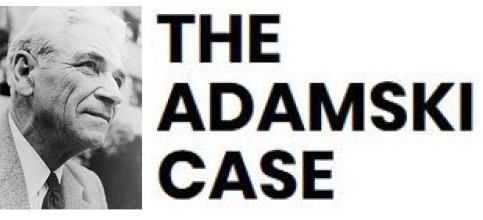Seven months after George Adamski’s passing in April 1965 former Swiss associate Lou Zinsstag shared an experience that she and Belgian co-worker May Morlet had with Adamski in Rome, where his mind was firmly set on visiting Pope John XXIII, who was seriously ill. Although she had already distanced herself from him in the spring of 1964, Ms Zinsstag shared this episode in a letter to Flying Saucer Review because it was not widely known outside Adamski’s inner circle, and was only fleetingly mentioned by Desmond Leslie in his obituary earlier that year. Additional facts about Pope John XXIII, provided below 🔗, make their account of Adamski’s private mission to the Vatican all the more plausible.
The prelude to this episode happened on 12 May 1963, when George Adamski went for an early morning walk from his hotel in the harbour area of Amager, Copenhagen, Denmark, where “there was a young man calling for him at the other end of the little harbour and he left to meet him. This man was a space man and he handed Adamski a small parcel and asked him to deliver it to the Pope in Rome as soon as possible. He now asked me to cancel his arrangements in Finland and Germany and then he went on via Belgium and Switzerland to Rome together with the co-workers from these two countries.” When Major Petersen, Adamski’s Danish host, and his people — Copenhagen detective inspector Ensio Slei among them — went to investigate Adamski’s claim, they found an angler who confirmed he had seen Adamski “had met a man, they had talked together for a while, after which the American had gone off to the hotel.” (Ronald Caswell, ‘Vatican Visit 1963’, in UFO Contact, October 1966; Hans C. Petersen, “From Dunghills to Polished Floors”, 2011.)
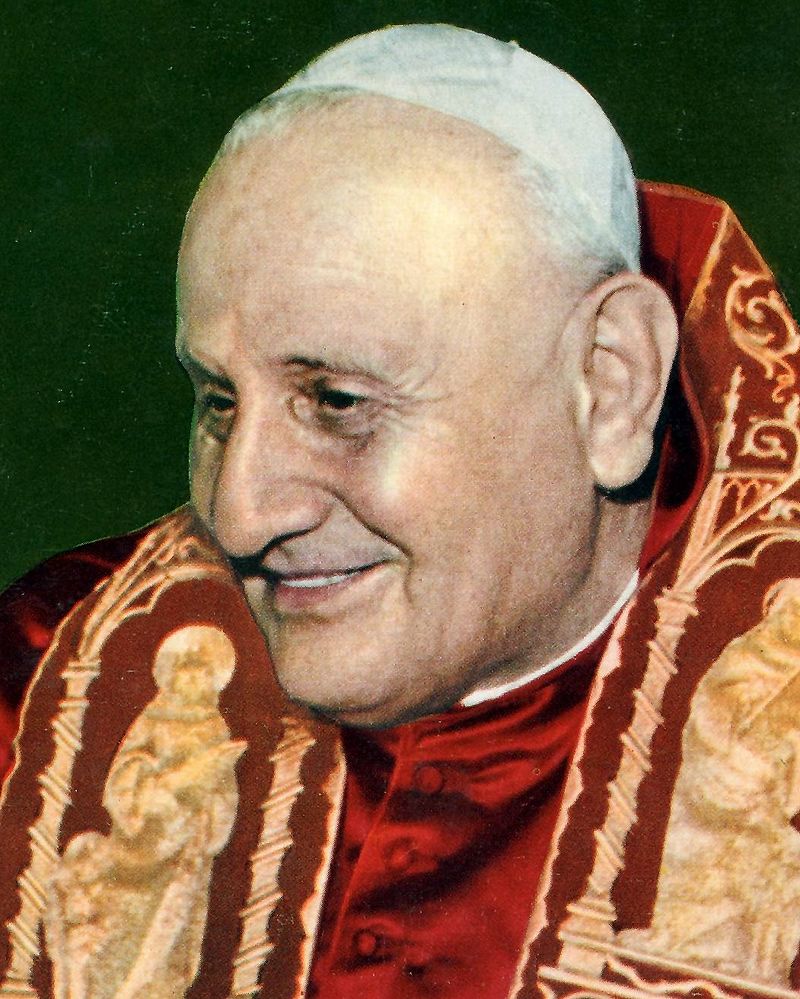
Lou Zinsstag writes that while in Rome later that month Adamski told her he was pretty sure to be received by the Pope and “that he was to hand a personal message to the Pope which he had received at Copenhagen a few weeks earlier. He also said he was to be in front of St. Peter’s Dome on Friday, 31st May, at 11 o’clock.” Once there, George looked around and within a few seconds walked away from his companions, through the crowd, to a door to the left of the Dome’s entrance: “This door was slightly ajar and the figure of a man was standing beside it, apparently looking out for someone… I made a mental note … that his being received at a gate other than the usual entrance would mean that he was not going to be registered on the daily visitors’ list. I thought this was interesting.” (Lou Zinsstag, ‘Adamski in Rome’, Flying Saucer Review, November-December 1965)
Independent confirmation came from an anonymous Jesuit member of the Vatican intelligence service (SIV), in an interview with an Italian journalist in 2001. He revealed that the small package that Adamski was asked to deliver to the Pope contained a liquid substance that would have saved the Pope from gastric enteritis, which afflicted him at that time, and in his final hours turned into acute peritonitis. According to the SIV member, the Pope did not drink the substance and he died three days later. (Cristoforo Barbato, ‘Intervista al Gesuita 🔗‘, Rome, 2001. Barbato later substantiated his claims about the SIV 🔗, which are supported by historical research 🔗.)
Following his papal visit, Adamski and his companions went for a tour of Rome but returned to their hotel (Albergo Auriga) after witnessing a traffic accident. While Morlet and Zinsstag went up to their rooms, Adamski adjourned to the coolness of the lounge. Not long afterwards, a dignitary of the Church arrived who, after talking with him for a while, handed Adamski a small container marked with an inscription in ink. This account was later confirmed to Ragnvald Carlsen (Ronald Caswell) by the hotel manager, who said: “…there was I believe, a cardinal or other Father from Vatican City. He stayed for awhile and then went away.” (Ronald Caswell and Hans C. Petersen, UFO Contact – IGAP Journal)
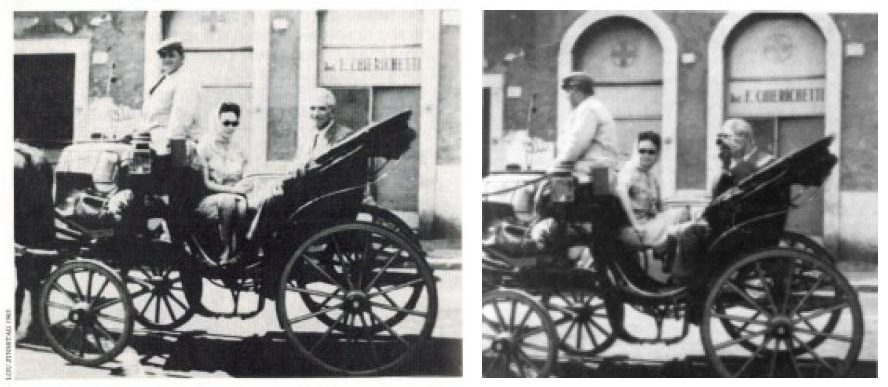
Lou Zinsstag recounts: “At lunch that day [Saturday, 1 June] George took out of his breastpocket a small plastic wallet, lilac in colour. It bore the most singular inscription I have ever seen, protected by a transparent cover. The written characters were of a very unusual kind… But beneath the text was the date of the interview — 31 May 1963 — written in Roman letters. We sat spellbound when George opened the little wallet. Embedded in white cotton wool was a most beautiful golden coin with the Pope’s head in profile on it [below]. As I discovered later it was a new ecumenical coin, ready for sale but not yet on the market.”
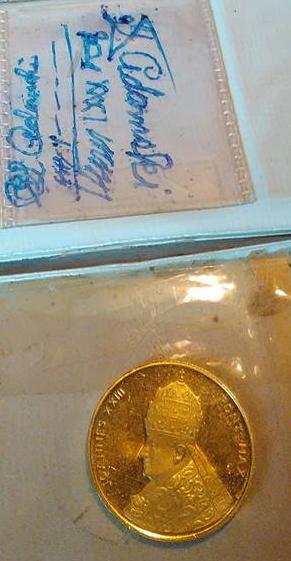
The medallion commemorated the opening — on 11 October 1962 — of the Second Ecumenical Council of the Vatican. Ms Zinsstag continues: “Weighing the coin in my hand I felt sure that it was of at least 18 if not 22 carat gold (my father was a goldsmith). Two weeks later the coin was on sale in European banks… Its price was between 300 and 400 Swiss francs. At the time of our visit to Rome, Adamski could not have bought it even if he had had the money which he certainly did not, and, as in Basle, he never left the hotel without us and he never entered a shop.” (Zinsstag & Good, 1983, pp.62-63)
In his Obituary for Adamski Desmond Leslie wrote: “Pope John gave him a beautiful effigy of himself, details of which, as far as I know, have never been released.” (Flying Saucer Review, July/August 1965, p.18) Leslie’s obituary was reproduced in Gray Barker‘s Book of Adamski (1967), where the last part of this description was changed to “…a beautiful gold medallion effigy of himself which as far as I know has never yet been released…” (p.11) [Emphasis added in both quotes.]
In a letter Desmond Leslie later wrote: “I was at school with Basil Hume 🔗, now Cardinal Hume; we were in the same dormitory. And I asked him, ‘Listen, Basil, this little gold medal of Pope John XXIII, where can you buy it?’ He answered, ‘No, not at all. You can’t buy those, only the Pope can give you those!’ I then told Adamski had gotten one, and he remarked, ‘Well, he must have done something very special to get one of those.'” (Nancy Redstar, Life with a Cosmic Clearance, 2003)
When the medal was later found to be commercially available (and was on the market in Switzerland the previous month) detractors jumped on it as “evidence” that Adamski lied about his audience with the Pope. Except, it was not Adamski who made these statements, but his close associates who initially assumed the coin was a special token of appreciation only awarded by the Pope himself.
The fact that the Vatican denies any record of Adamski’s private (!) visit is also seen as “evidence” of Adamski lying, but the Vatican’s reply to the original inquiry, made by Ronald Caswell in September 1963, merely said “it is not possible to provide the information requested…” Also, if the visit was a fabrication, it is not likely that the Vatican would have allowed Father Segundo B. Reyna, a Jesuit priest who was the Director of the Adhara Astronomical Observatory in Buenos Aires, Argentina and himself an eyewitness to various UFO sightings, continue to share the story of Adamski’s visit to the Vatican, as he did many times. (Ronald Caswell, ‘UFO Contact – The day before yesterday’, p.83)
In dismissing this episode as a ruse to boost his image, detractors ignore several crucial facts. (1) Adamski didn’t seek publicity for his private mission to the Vatican, and didn’t share it beyond a few close associates. (2) If it was meant to boost Adamski’s image, it would have required an elaborate and coordinated act of collusion on the part of Hans Petersen, Ronald Caswell, Lou Zinsstag, May Morlet, and Desmond Leslie, who then waited until after Adamski’s death to implement it. (3) Ms Zinsstag, who was the first to make the story about the Vatican visit public, only did so after she had distanced herself from Adamski and he had died already. Why wait and go through all this trouble to boost the image of someone you no longer support and who is no longer alive?
In addition, critics also conveniently disregard some related facts about Pope John XXIII — and his predecessor Pius XII — that make Adamski’s audience only more plausible.
An event that occurred in 1935 seems portentous in this respect. In an initiation ritual performed in a masonic temple in Turkey, one of the Brothers began to speak in a voice not his own. The Lord Chancellor of the order transcribed everything the Brother said, among other things: “The lights of heaven will be red, blue and green. And they will be fast. Someone that comes from far away wants to meet us, the Son of Earth. And already there have been encounters. But the ones who really saw them, remained silent.”
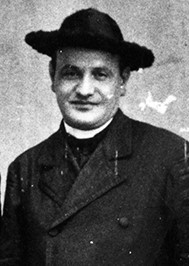
The Brother involved was Angelo Roncalli, then bishop of Bergamo, Italy, who would later become Pope under the name John XXIII. (Pier Carpi, Le Profezie di Papa Giovanni, 1976, p.154)
Later, in the early 1960s Pope John XXIII, also known as the “good Pope”, to whom thousands of miracles and healings have been attributed worldwide, is reported to have had encounters with extraterrestrial visitors. One well-known encounter, documented by the Pope’s personal assistant Loris Capovilla, took place one evening in July 1961 in the gardens of the Pope’s summer residence in Castel Gandolfo.
While taking a walk around the spacious gardens, the Pope and Monsignor Capovilla saw an unusual craft in the sky: “It was oval and had blue and amber flashing lights. The craft seemed to fly over our heads for a few minutes and then landed over the grass on the south end of the garden. A strange being came out of the craft, he looked human, except that he was surrounded by a golden light…”
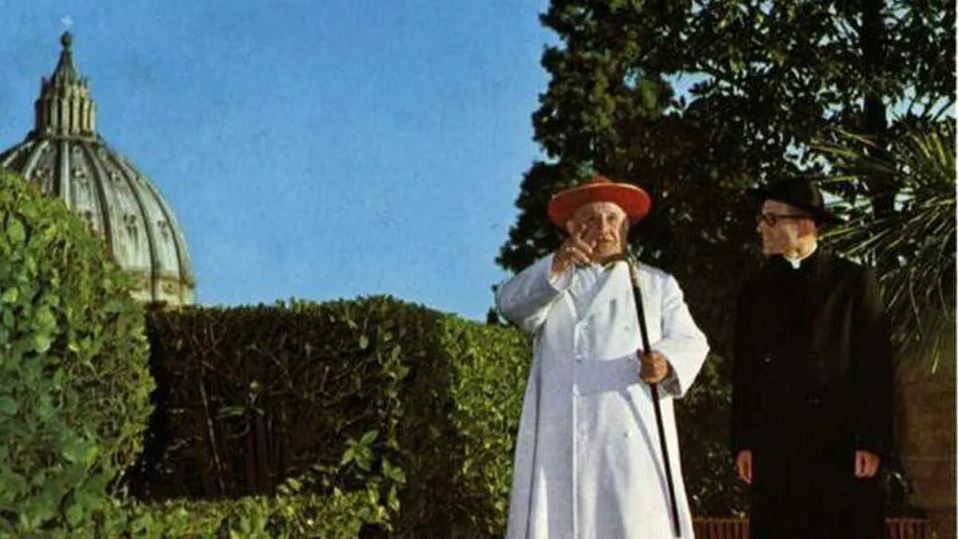
“The Pope and I kneeled down. We didn’t know what we were witnessing. But we knew that it was not from this world, so it must have been a celestial event. The Holy Father stood up and walked towards the being. The two of them spent 15 to 20 minutes together. It seemed they talked intensely. They did not call me, so I remained where I was and could not hear anything of the conversation. The being turned around and walked towards the craft and left right away. The Pontiff came towards me and told me: ‘The sons of God are everywhere. Sometimes we have difficulties in recognizing our own brothers’.”
This episode first became public through a report in a UK tabloid (reportedly The Sun of June 1985). Although the report has thus far not been found in newspaper archives, the encounter was confirmed by Bishop Higinio Alas Gómes 🔗 at a UFO conference in Peru in 2007, and again in an interview with Radio Punto Cero 🔗 on 15 February 2009. However, George Adamski already mentioned the extraterrestrial visits to the Vatican in a talk on 8 September 1963! (‘Notes from Adamski Lectures 1963-1965’)
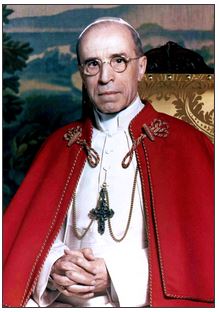
That this story only became public well after the Pope’s demise may be explained by some further comments from ‘the Jesuit’ in the interview with Mr Barbato in 2001. The SIV operative explained: “The task entrusted by the extraterrestrials to Adamski was to attempt an ultimate and final agreement with the dying Pontiff” about a public acknowledgement of the extraterrestrial presence on the part of the Church. “He was a messenger on behalf of the same beings who met Pius XII 🔗“, who preceded John XXIII, twice in the Vatican Gardens at the Pontifical Academy of Sciences.
Significantly, in the same letter to Flying Saucer Review in 1965 referenced above, Lou Zinsstag reminisces: “I had accompanied George to Rome already in 1959 and I still remember his urgent wish to see the Pope, Pius, in a private interview. This aim, however, was not achieved in 1959.” (Her reference to Pius XII must be due to a faulty memory, since John XXIII succeeded Pius upon the latter’s demise in 1958.)
Although John XXIII, upon receiving the cure for his illness, concluded “that these ‘Space Brothers’ might certainly conduct positive and benevolent activities towards humanity” he decided that “they would have to operate autonomously and separately from the Church…” Barbato’s anonymous source concludes: “With the attempt of Adamski he [the Pope] ended the direct contact between these beings and the Pope himself and his successors who, trusting in the insights of John XXIII, established that it was no longer appropriate to have direct relations.”
Or, in other words, mysteriously uttered 28 years earlier by the Rosicrucian Brother Roncalli, “the ones who really saw them, remained silent”…
FAIR USE NOTICE: This page may contain (links to) copyrighted materials the use of which has not been specifically authorized by the copyright owner. The Adamski Case publishes (links to) these materials solely for educational and research purposes, constituting Fair Use in accordance with Title 17 U.S.C Section 107 of the US Copyright Law, and Article 5 of the European Directive 2001/29/EC. Please contact The Adamski Case about any copyright or attribution issues.
